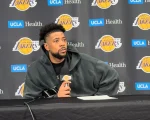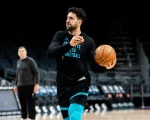
In the NBA’s complex salary cap system, the mid-level exception (MLE) is one of the most important tools teams use to sign players when they’re over the cap.
It allows franchises to add talent without needing cap space, helping playoff contenders stay competitive and rebuilding teams maintain flexibility.
The MLE comes in three forms: the Non-Taxpayer Mid-Level Exception, the Taxpayer Mid-Level Exception, and the Room Mid-Level Exception.
Each version has a different spending limit based on a team’s salary situation.
The Non-Taxpayer MLE is the largest. For the 2024-25 season, it was valued at approximately $12.9 million for the first year of a contract and can be used for deals up to four years in length. This number is set to increase to $14.1 million for the 2025-26 season.
Teams that are over the salary cap but below the luxury tax apron qualify for this exception.
For example, the New York Knicks used their Non-Taxpayer MLE in 2023 to sign Donte DiVincenzo to a four-year, $50 million deal.
The Taxpayer MLE is available to franchises that exceed the first luxury tax apron. It’s significantly smaller—in 2024-25, it’s about $5.2 million for the first year, with a maximum of three contract years.
The Golden State Warriors frequently use the Taxpayer MLE due to their high payroll, including their 2021 signing of Otto Porter Jr., who became a key contributor during their 2022 title run.
Lastly, the Room Mid-Level Exception applies to teams that previously used cap space and are now under the cap. It’s intended for teams that become capped out after signing players with available room.
This version of the MLE was worth about $7.7 million in 2024-25 and can be used for contracts up to two years.
An example is the Orlando Magic using the Room MLE to sign Joe Ingles in 2023 after clearing cap space for other moves.
Importantly, a team can only use one MLE per season. Once they use it, they cannot access another version in the same league year.
The mid-level exception is a strategic resource that helps teams maintain roster depth while navigating the NBA’s financial restrictions.








